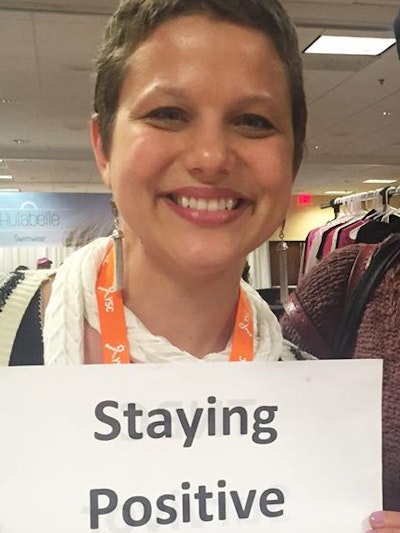Dr. DeMichele is the co-leader of the Breast Cancer Research Program and a medical oncologist at the Abramson Cancer Center of the University of Pennsylvania
For every woman diagnosed with TNBC, the great fear is recurrence. Once primary treatment is completed, there is usually nothing to do but wait for two to five years to learn whether the disease will return and spread. Angie DeMichele, MD., is leading an innovative new program aimed at identifying which individuals are more likely to have a recurrence. It is a key component of her Breast Cancer Center of Excellence program at Penn.
“We are looking for cancer cells that have disseminated but cannot be detected with conventional means,” she says. “These patients have no evidence of disease or have clinically complete responses. But we now know that some cells are resistant to treatment. They escape and ‘hide’ in the bone marrow–and then they just fall asleep and remain dormant until something triggers their growth. These are cells that are most likely to cause recurrence.”
Dr. DeMichele and her group have been doing bone marrow aspirations on patients with all types of breast cancer looking for these dormant cells–and have found them in 30% of patients with TNBC. By itself, that information is important, but the next step is even more critical–intervening to prevent that recurrence.
The CLEVER trial is the first of three planned studies designed to do exactly that. Dr. DeMichele is actively recruiting patients with Stage IIB breast cancer interested in undergoing the bone marrow aspiration to determine if they have dormant cells following their primary treatment. That treatment can include neoadjuvant or adjuvant therapy, surgery and radiation. If the test is positive, patients will receive therapies, HCQ and everolimus, specifically designed to kill those cells and undergo follow bone marrow aspirations.
To be eligible, you need to have been treated within the last six years. You do not need to have received your treatment at Penn.
The plan is to follow CLEVER with two additional trials. The first, CLEAR will test targeted therapy that inhibits the c-met pathway, thought to trigger activity in the dormant cells. C-met is not activated in primary breast cancers, so these therapies are not useful in treating known tumors. GLACIER will be a phase III trial conducted at multiple centers that applies what is learned in the first two studies to a larger population.
GLACIER? That sounds slow, I say, but Dr. DiMichele shakes her head. “I think it suggests something very big and we’re just seeing the tip right now,” she says. “If this works out the way we think and hope it will, it could potentially transform the way we think about response to treatment, and treat women who are at high risk of breast cancer.
To learn more about enrolling in the CLEVER trial, contact Angie DeMichele, MD, at 855-216-0098 or email PennCancerTrials@emergingmed.com.




